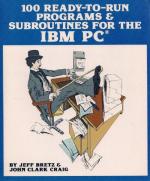|
This section contains 288 words (approx. 1 page at 300 words per page) |
Conditional control transfer was proposed by John von Neumann in the mid 1940s. His concept held that a program could be written in a series of subroutines--small blocks of code that could be read in any desired order:mdash;instead of having one large routine or a single series of chronologically ordered steps.
Since this proposal, conditional control transfer has become a reality. Computer code can branch based on logical statements such as IF....THEN, and can be looped (or repeated) with an FOR statement. Such statements have created libraries of code, also called subroutines, that can be used and re-used.
Conditional control transfer permits code (the subroutines) to be used in various parts of a program, and eliminates the need for a programmer to redundantly write in the same code in different routines. Moreover, the outcome of the use of the subroutine in different areas of a program may be different. The subroutine can be executed differently. This is because the machine instruction mechanism of conditional control transfer allows the program sequence to be stopped and started again at any point. Because the instruction programs are stored together with the data in the same memory, the instructions can be arithmetically changed in the same manner as data can be changed.
As a result of conditional control transfer, computational work has become much faster, flexible and more efficient since von Neuman's time. Regularly used subroutines now do not have to be reprogrammed for each new program in which they are used. Rather, the subroutines can be maintained in the libraries, to be read into memory only when they are required. Thus, a given program might be almost completely assembled using library subroutines.
|
This section contains 288 words (approx. 1 page at 300 words per page) |


